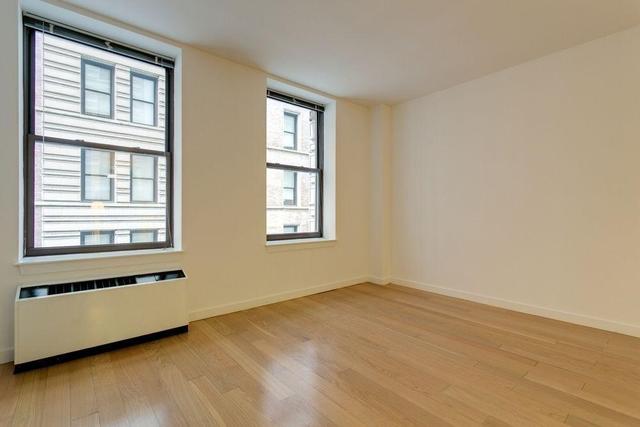
Why Don’t Buildings Have A 13th Floor?
By: ROS Team
Many buildings inexplicably omit the 13th floor, sparking curiosity among observant individuals. Surprisingly, this omission does not arise from an innocent oversight or a numerical mistake in floor designations.
Rather, it manifests as a captivating display of triskaidekaphobia—a prevalent dread of the number 13.
Despite the modern world’s emphasis on rationality and scientific progress, ancient superstitions continue to cast their shadow over unexpected realms, including the architecture of towering skyscrapers.
In this blog post, we embark on a fascinating journey through history, psychology, and societal influences to unravel the reasons behind this peculiar phenomenon.
Historical Origins of Triskaidekaphobia
The fear of the number 13, or triskaidekaphobia, is a superstition deeply rooted in history and various cultures around the world. To understand why buildings omit the 13th floor, we must first explore the historical origins of this pervasive fear.
1. Ancient Beliefs and Myths
Triskaidekaphobia, the fear of the number 13, has ancient origins intertwined with various civilizations. In ancient Babylon, for instance, the Code of Hammurabi intriguingly excluded any mention of the number 13 in its legal laws.
Similarly, within Egyptian beliefs, life was believed to consist of twelve stages, with the thirteenth stage representing the afterlife. It is plausible that this association between thirteen and the afterlife contributed to the emergence of negative connotations surrounding this number.
2. The Last Supper and the Fear of 13
One of the most well-known historical events associated with the fear of 13 is the Last Supper of Jesus Christ. According to Christian tradition, there were 13 individuals present at the table, with Judas Iscariot being the 13th, who later betrayed Jesus.
This association with betrayal and ill fortune further solidified the superstition surrounding the number 13 in Western culture.
3. Other Cultural Superstitions
Triskaidekaphobia is not limited to Western cultures. In Norse mythology, there is a tale of a banquet in Valhalla attended by 12 gods. Loki, the trickster god, was not invited, but he crashed the party, becoming the 13th guest, and chaos ensued.
In Chinese culture, the number 13 is often considered unlucky as it sounds similar to the word for “definitely” or “assuredly” in Mandarin, creating an association with certainty in a negative sense.
These historical beliefs and myths have contributed to the deep-seated fear of the number 13, which has, in turn, influenced various aspects of modern life, including the design of buildings.
Modern Perspectives on the 13th Floor
In the modern era, our world has witnessed tremendous advancements in science and technology. We’ve sent humans to the moon, decoded the human genome, and built skyscrapers that scrape the heavens. Yet, despite our progress, the superstition surrounding the number 13 still lingers, especially in the world of architecture.
Let’s explore how modern society views and deals with the concept of the 13th floor.
1- Changing Attitudes Toward Triskaidekaphobia
Over time, attitudes toward triskaidekaphobia have evolved. While the fear of the number 13 remains a potent superstition for some, many people today view it with skepticism and rationality.
The scientific method and critical thinking have helped debunk many superstitions, but triskaidekaphobia is one that continues to persist in certain aspects of our lives.
2- The Rise of Rationalism and Skepticism
In an age of information and reason, some might wonder why triskaidekaphobia still holds sway. The answer lies in the complexity of human psychology.
Cognitive biases and heuristics, such as the fear of the unknown or the tendency to attribute meaning to patterns, contribute to the persistence of superstitions like triskaidekaphobia.
Even in the face of evidence to the contrary, some individuals find comfort in adhering to long standing beliefs.
3- Buildings that Include the 13th Floor
While it’s true that many buildings omit the 13th floor, there are exceptions to this rule. Modern perspectives have led some architects and building owners to question this superstition. As a result, you can find buildings that proudly include a 13th floor. This change reflects a growing willingness to challenge traditional superstitions and embrace rationality.
Famous US Buildings without a 13th Floor
Here are some famous US buildings without a 13th floor:
- Hotel Burnham (Chicago)
- Trump Tower (Chicago)
- The Essex House (New York City)
- The Sherry-Netherland (New York City)
- The Omni Berkshire Place (New York City)
- The Plaza Hotel (New York City)
Do Hotels Have A 13th Floor?
Yes, many hotels do have a 13th floor, but it’s often referred to as the “14th floor” due to superstitions surrounding the number 13. Some hotels skip labeling the 13th floor directly, as it is considered unlucky in some cultures.
However, the physical floor still exists, and it typically contains guest rooms and facilities just like any other floor. So, while it may not be labeled as the 13th floor, it is there in most cases.
So Why Are There No 13th Floors?
Buildings often skip the 13th floor due to triskaidekaphobia, a superstition involving the fear of the number 13. People believe it’s unlucky, so architects and builders omit it to cater to this superstition. In reality, the 13th floor is typically there, but it’s labeled as the 14th floor to avoid any negative connotations associated with the number 13.








